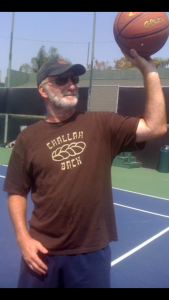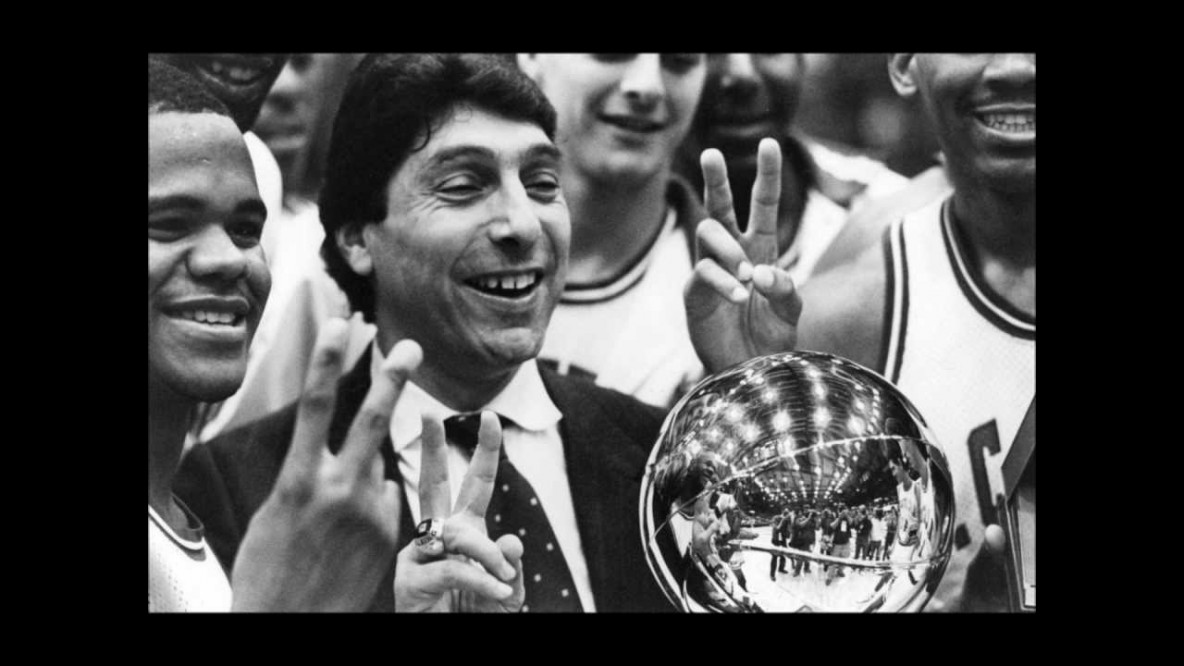This post was authored by Nora Gilbert, a UC Berkeley graduate student who is in the joint Master of Public Health/Master of City Planning program with a specialty in Public Health Nutrition. Nora was a Spring 2014 Eat.Think.Design. student and wrote this narrative as part of a class assignment. Students were asked to watch this video, Survive and Advance, of Jimmy Valvano, an American college basketball coach, giving his 1993 ESPY Speech “Don’t give up…Don’t ever give up” with the assignment to write about Passion.
As I watched the Survive and Advance documentary, I found myself enthralled. Everyone loves a good sports underdog story, but as I followed the sequence of one unexpected win to the next, I grew quickly more attached, more invested, and more inspired by North Carolina State’s repeated come-from-behind victories. After it ended, I was compelled to learn more and did what any responsible grad student researcher does: searched “Jimmy Valvano” on Wikipedia. I quickly learned that he was from Queens, went to Rutgers where he played basketball, graduated in the spring of 1967 and started coaching the freshman basketball team that fall.
There were twelve players on that freshman team – the only twelve who would be in the locker room for the Green Bay Packers slip-up Jimmy retold in his famed ESPY speech. One of those was a young man from Long Island: a new basketball recruit who had coincidentally played for Jimmy Valvano’s father in the Long Island summer league a few years earlier. As it turns out, it was my father, Gary Gilbert.
I called my dad to ask about that night – and about being coached by Jimmy Valvano during his first years playing college basketball. He was quick to say that Jimmy was the best coach he ever had. (It’s worth noting that he did not go on to play after college, so the list of coaches isn’t as extensive as some of the other players in Survive and Advance, but still). When I asked why, he gave a fascinating reply that resonates as we think about applying this story – and the idea of passion – to our design and innovation process. He explained, “Jimmy taught me how to do things I thought I already knew how to do.” It changed his game.
 He described Jimmy’s coaching style as “controlled passion.” For him, basketball was simple: Jimmy taught his players that the only way to win was to control the options. If you forced an opposing player to only turn one direction, you and your teammate would be ready and waiting. His strategy was to design a system of prediction and preparedness – lessons that can easily be applied far beyond a freshman basketball team in New Jersey.
He described Jimmy’s coaching style as “controlled passion.” For him, basketball was simple: Jimmy taught his players that the only way to win was to control the options. If you forced an opposing player to only turn one direction, you and your teammate would be ready and waiting. His strategy was to design a system of prediction and preparedness – lessons that can easily be applied far beyond a freshman basketball team in New Jersey.
Before the locker room talk he describes in his ESPY speech, the team had been practicing for weeks. The Jimmy the players had come to know was a soft-spoken man who never raised his voice, and who was incredibly supportive and egalitarian (after all, he was only three years older than some of these guys). However, the Jimmy that walked into that locker room before their opening home game face-off with University of Pennsylvania seemed to the team an entirely different man.
It’s true that on his first game night as a college basketball coach, he told this freshman team that they’d succeed if they focused on “their families, their religion, and the Green Bay Packers.” But then the story my dad tells is a little different than the one Jimmy told at the ESPYs, where he recalls experiencing door trouble upon entering the locker room for this famed pump-up speech.
In fact, the truth makes for an even better story: Jimmy entered the locker room trouble-less, gave his speech, and then rallied the team to run out onto the court – the first time they would play not for a few hundred fans in their high school gyms, but for five thousand of their screaming peers and classmates. The adrenaline was palpable. He ran in front of them to lead the charge. Upon reaching the door to the gym, he jumped up several feet in the air and high-kicked the door to open it. With an abrupt thud he was on the ground, brand new suit and inspirational momentum on the floor beside him. The door was locked. Two minutes later, a Rutgers custodian came to the rescue, while their adrenaline paused behind the closed gym door. Once it was open, Jimmy Valvano acted like nothing had happened, jumped again to charge, and led his Freshman team onto the court where they defeated the higher-ranked Penn by one point – a telling start to his coaching career.
It seems Jimmy Valvano’s passionate mantra for his research foundation, “don’t give up… don’t ever give up,” was alive and well long before his fight against cancer.

